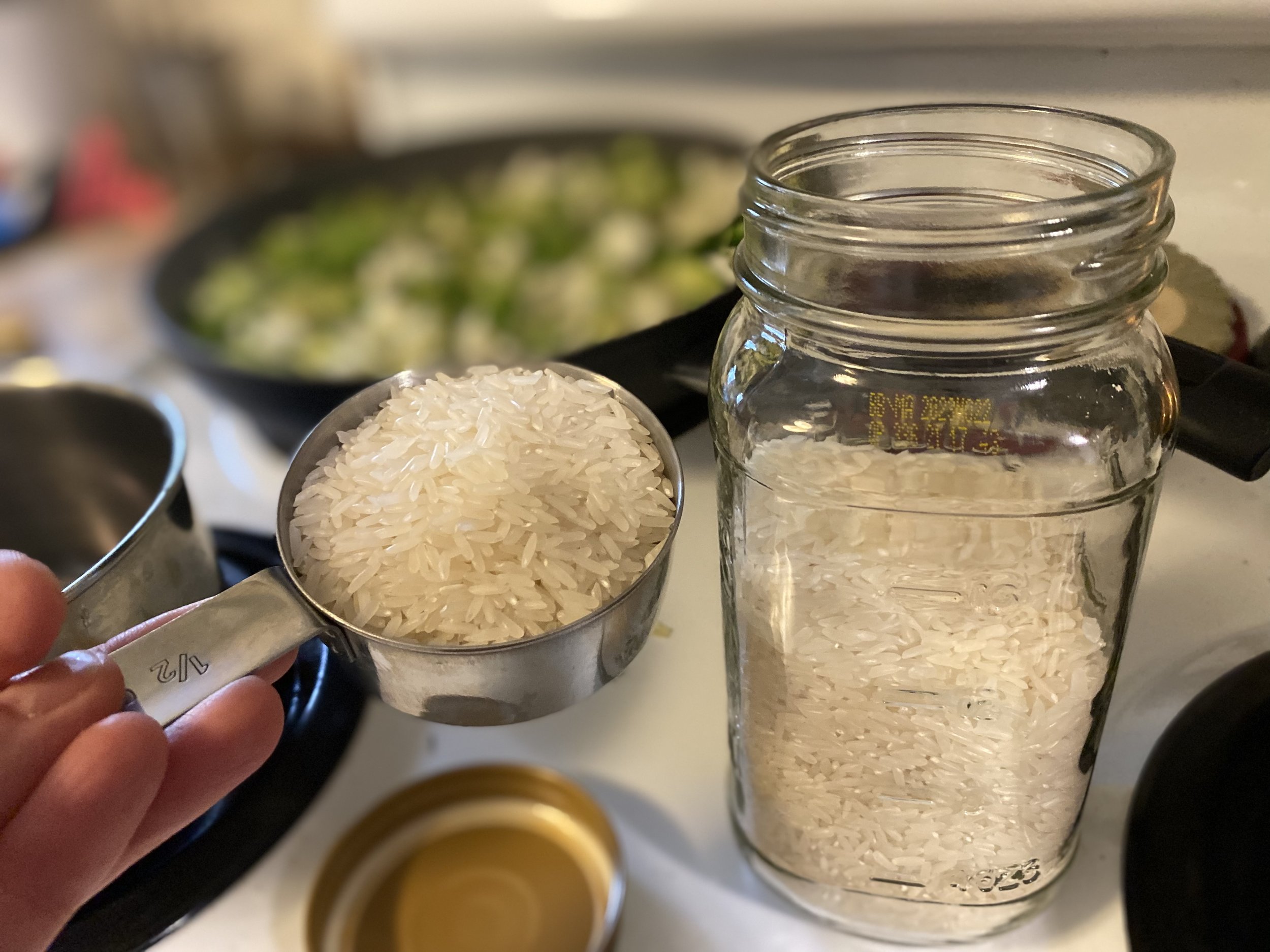Is Refill Rice Affordable?
Now that I’m in the habit of shopping at the refill store, swapping packaged rice for refill rice was pretty easy. I pick up groceries from Great Lakes Refill on a regular basis, so I just added rice to my list!
Financially Sustainable?
Is it financially sustainable to make a swap like this? My refill store is really helpful in comparing costs. They price everything out by the gram. I bought jasmine rice for $5.40/kg. It cost me $2.40 to fill a mason jar with rice. The difference between a store bought bag of a similar amount is pennies. So, yes, it is financially sustainable. You might be able to get a better price by buying a large bag, but I’d rather buy rice in amounts that I can use monthly, rather than storing a large bag.
Most people will choose sustainable packaging if given the choice, and if the cost is minimal. Sustainable packaging isn’t quite mainstream yet, and therefore it usually costs more. I’m prepared to pay more for compostable packaging so naturally I’m prepared to pay slightly more for rice with NO packaging from the refill store.
Cooking Without Instructions?
One potential downfall to purchasing items in bulk is that they don’t come with cooking instructions. There are some very easy solutions to this problem. When it comes to rice, I’m familiar with the instructions. One part rice to two parts water, boil, then cook on low 10-15 minutes. Rice purchased from the refill store cooks perfectly with this method.
There are some items that I don’t have the same comfort with. I usually by canned, pre-cooked chick peas. I recently bought dry chickpeas from the refill store. In order to cook chickpeas I’ll have to look up instructions online, which is very easy to do these days!
Your Turn!
Have you made any swaps recently? Will you try refill rice or other pantry staples? Let me know via contact page.

